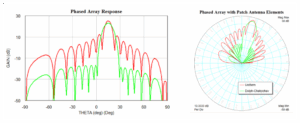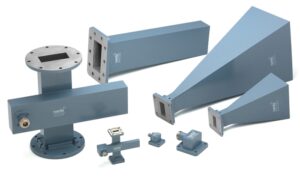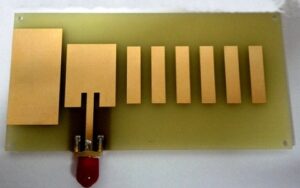Table of Contents
Basic Principles and Definitions
Overview of Directional Couplers
Directional couplers are devices widely used in radio technology and telecommunications to divide or sample radio frequency (RF) power. They allow a certain amount of electromagnetic power in a transmission line to be diverted to a port, enabling the signal to be used in another part of the system without affecting the transmission. The core attribute of a directional coupler is its ability to distinguish between the forward and reflected power, which is essential for measuring the standing wave ratio (SWR) and adjusting antenna systems for optimal performance.
One common specification for a directional coupler is its coupling factor, which typically ranges from 10 dB to 30 dB. This means that if a coupler has a coupling factor of 20 dB, the signal power directed to the coupled port is 100 times less than the power flowing in the main line. Another critical specification is directivity, which is often above 30 dB for high-quality couplers, indicating a strong ability to differentiate between forward and reflected signals.
Understanding Combiners
Combiners are used to merge two or more signals into a single output while minimizing interaction between the combined signals. They are crucial in applications where signals from different sources, such as antennas or transmitters, need to be combined without causing interference to each other. Unlike directional couplers, combiners focus on efficient power combination with minimal loss.
The performance of a combiner can be evaluated by its insertion loss and isolation between input ports. A typical combiner might have an insertion loss of less than 0.5 dB, ensuring that most of the input power is transmitted to the output. Which can be as high as 30 dB, prevents high power signals from one input from leaking into another, safeguarding against interference.

Key Differences Between Directional Couplers and Combiners
Functional Differences
Directional couplers are specialized devices designed to sample a small portion of the energy from a transmission line while allowing the majority of the power to pass to the load. They are unique in their ability to differentiate between the forward and reverse power flow, making them indispensable for monitoring and measurement applications. The power handling capacity of directional couplers can range widely, but a common specification might be up to 50 watts for small systems, with larger, more specialized couplers handling power levels up to several kilowatts.
Combiners are engineered to merge multiple input signals into a single output with minimal loss. They are critical in systems requiring the amalgamation of signals from different sources, such as multiple transmitters or antennas. A high-quality combiner can achieve an insertion loss as low as 0.2 dB, which is crucial for maintaining signal strength and quality. The isolation between ports in a combiner is paramount to prevent cross-channel interference, typically ranging from 15 to over 30 dB depending on the design and application.
The material used in the construction of these devices significantly affects their performance and durability. For example, combiners handling higher power levels might use materials capable of withstanding higher temperatures, impacting both cost and efficiency. The cost of directional couplers and combiners can vary, with prices ranging from a few dollars for basic models to several hundred for high-power, high-precision devices.
Applications in Telecommunication
Directional couplers find their essential use in telecommunication systems for signal distribution and measurement tasks. They are pivotal in adjusting antenna systems for optimal SWR, a critical factor in maintaining the efficiency and quality of the communication link. A directional coupler inserted in a transmission line might be used to monitor forward and reflected power, aiding in the tuning of the antenna system without interrupting the transmission.
Combiners play a vital role in multiplexing signals for broadcast or cellular base station applications, where signals from multiple frequencies are combined into a single antenna system to optimize space and material use. This capability is especially important in dense urban areas where the physical space for antennas is limited, and the cost of installation and maintenance is high.
Technical Specifications and Performance Metrics
Isolation and Coupling
Isolation is a critical specification in both directional couplers and combiners, measuring the degree to which signal paths are kept separate within the device. High isolation ensures that signals in one path do not interfere with those in another, which is paramount in systems where signal purity is crucial. A combiner designed for telecommunication applications might boast an isolation level of 30 dB or higher, ensuring that signals from different transmitters do not mix, preserving signal integrity and preventing cross-channel interference.
Coupling refers to the amount of signal transferred from the main line to a coupled port in a directional coupler. It is a precise measure indicating the efficiency with which a signal is sampled or divided. A typical value might be 20 dB, meaning that 1% of the power is directed to the coupled port. This specification is vital for ensuring that the sampled signal is sufficient for measurement or monitoring purposes without significantly disturbing the main signal flow.
Insertion Loss and VSWR (Voltage Standing Wave Ratio)
Insertion loss is the measure of signal power loss resulting from the introduction of a device into the transmission line. Minimizing insertion loss is essential for maintaining signal strength and quality throughout the system. A high-quality directional coupler or combiner might have an insertion loss as low as 0.1 to 0.5 dB, ensuring that the majority of the signal power reaches its intended destination.
VSWR (Voltage Standing Wave Ratio) is an indicator of impedance matching within the transmission line and connected devices. An optimal VSWR is close to 1:1, signifying that nearly all the transmitted power is delivered to the load with minimal reflection. In practical applications, a VSWR of 1.2:1 is considered excellent, indicating that more than 99% of the transmitted power is used effectively. This metric is crucial in telecommunication systems where power efficiency and signal clarity are paramount.
The performance of directional couplers and combiners in terms of isolation, coupling, insertion loss, and VSWR directly impacts the efficiency, reliability, and quality of RF and microwave systems. These specifications guide engineers in selecting the appropriate devices for their applications, balancing factors such as power handling, frequency range, and physical size against the system’s needs and constraints.







